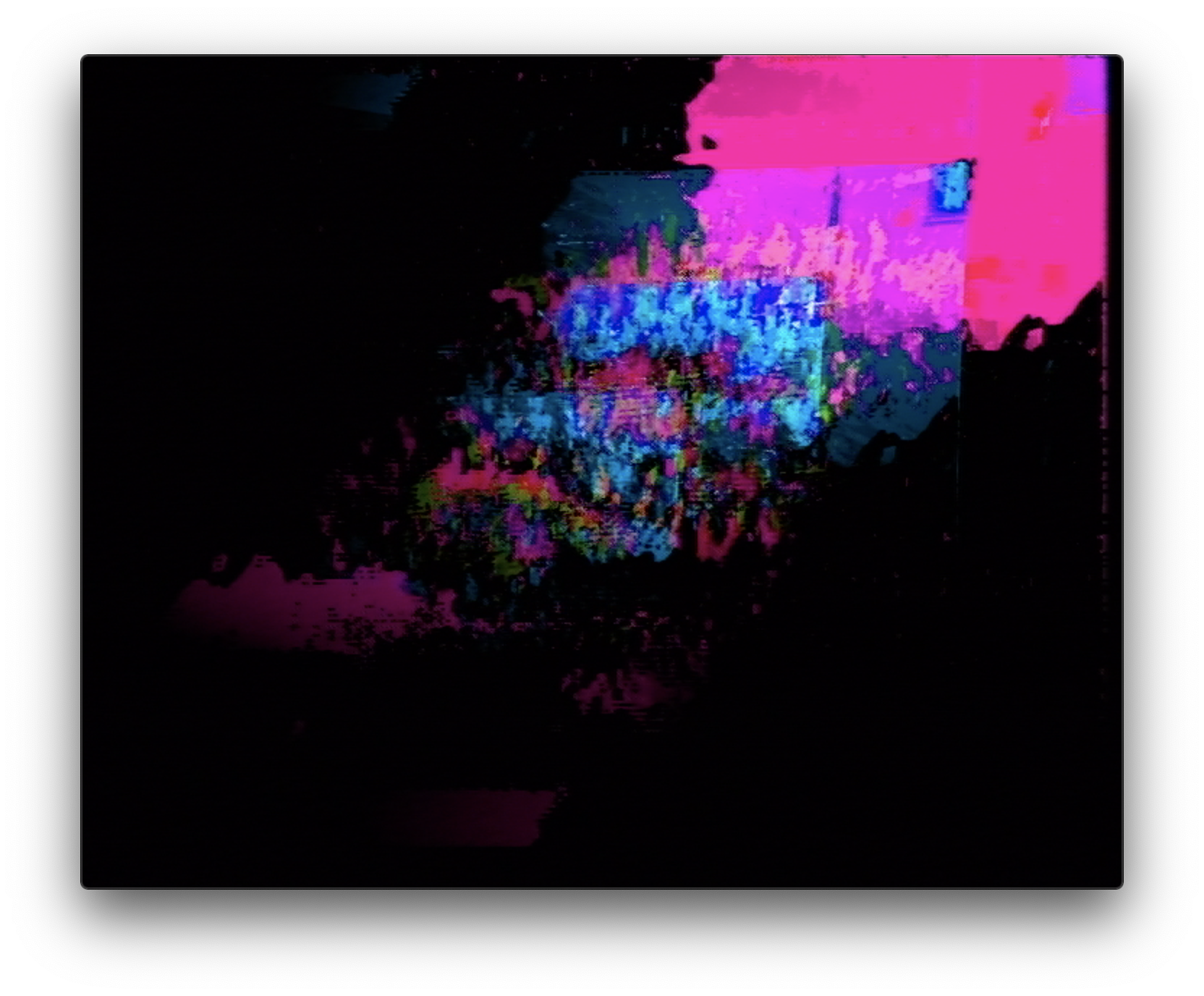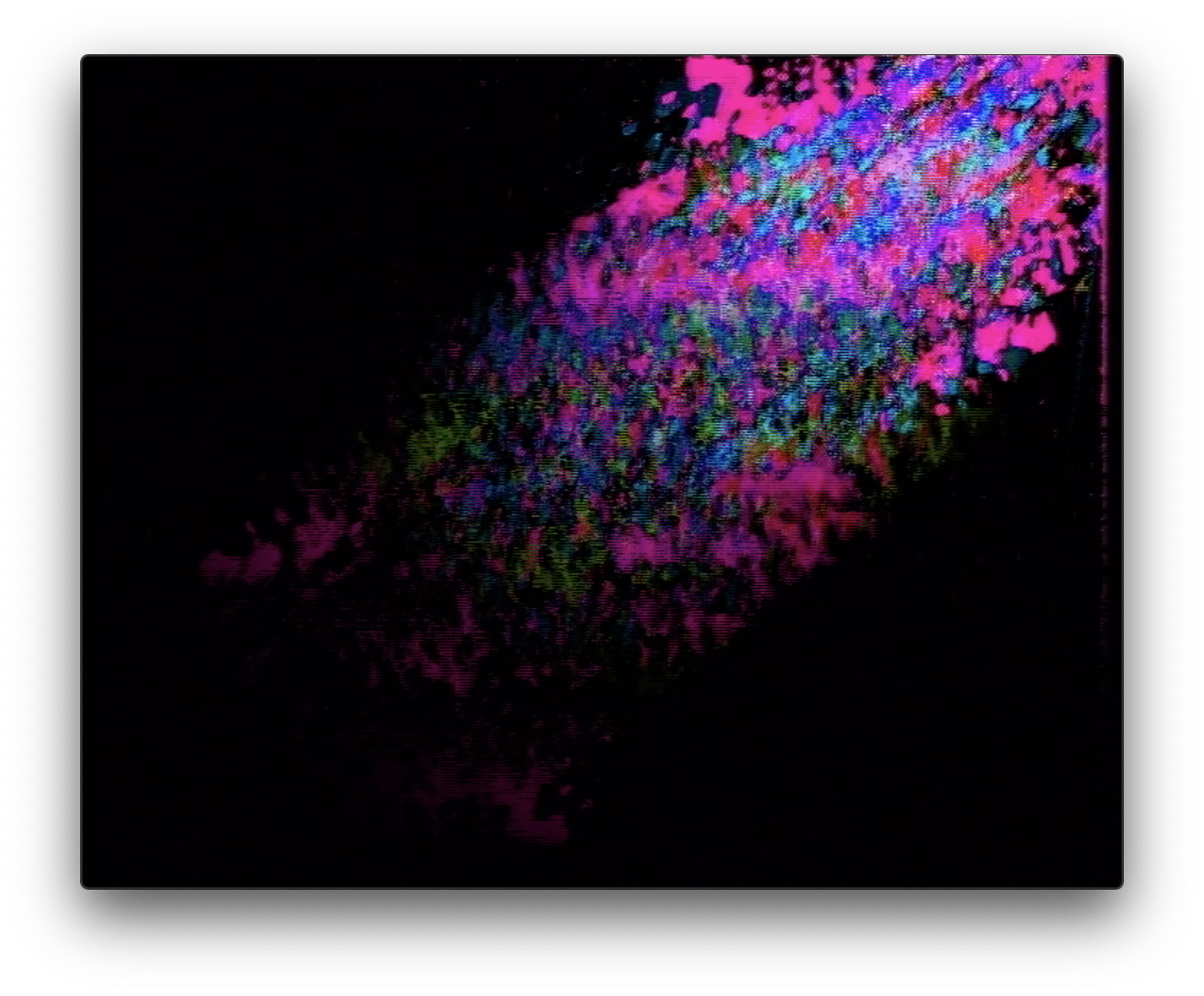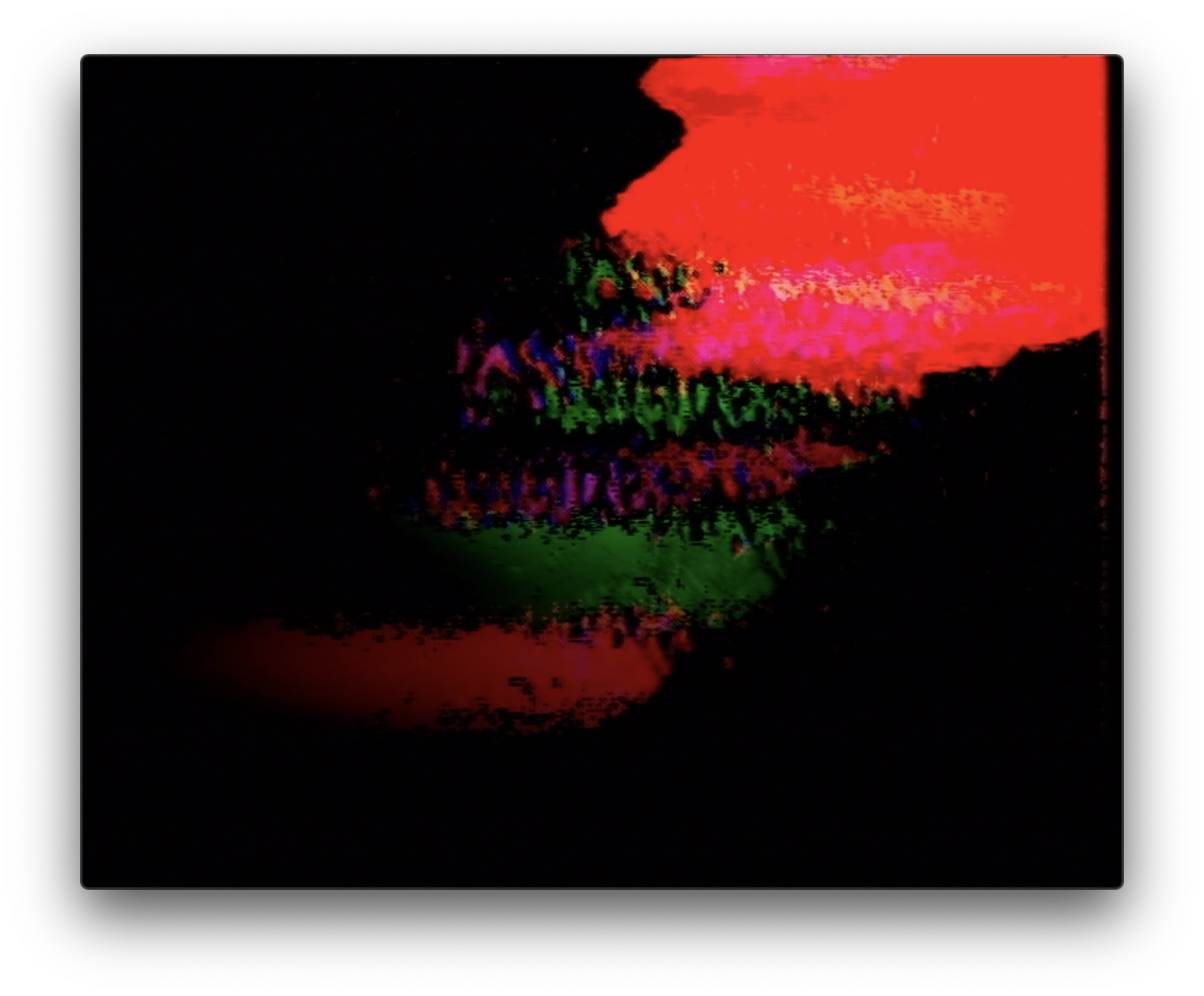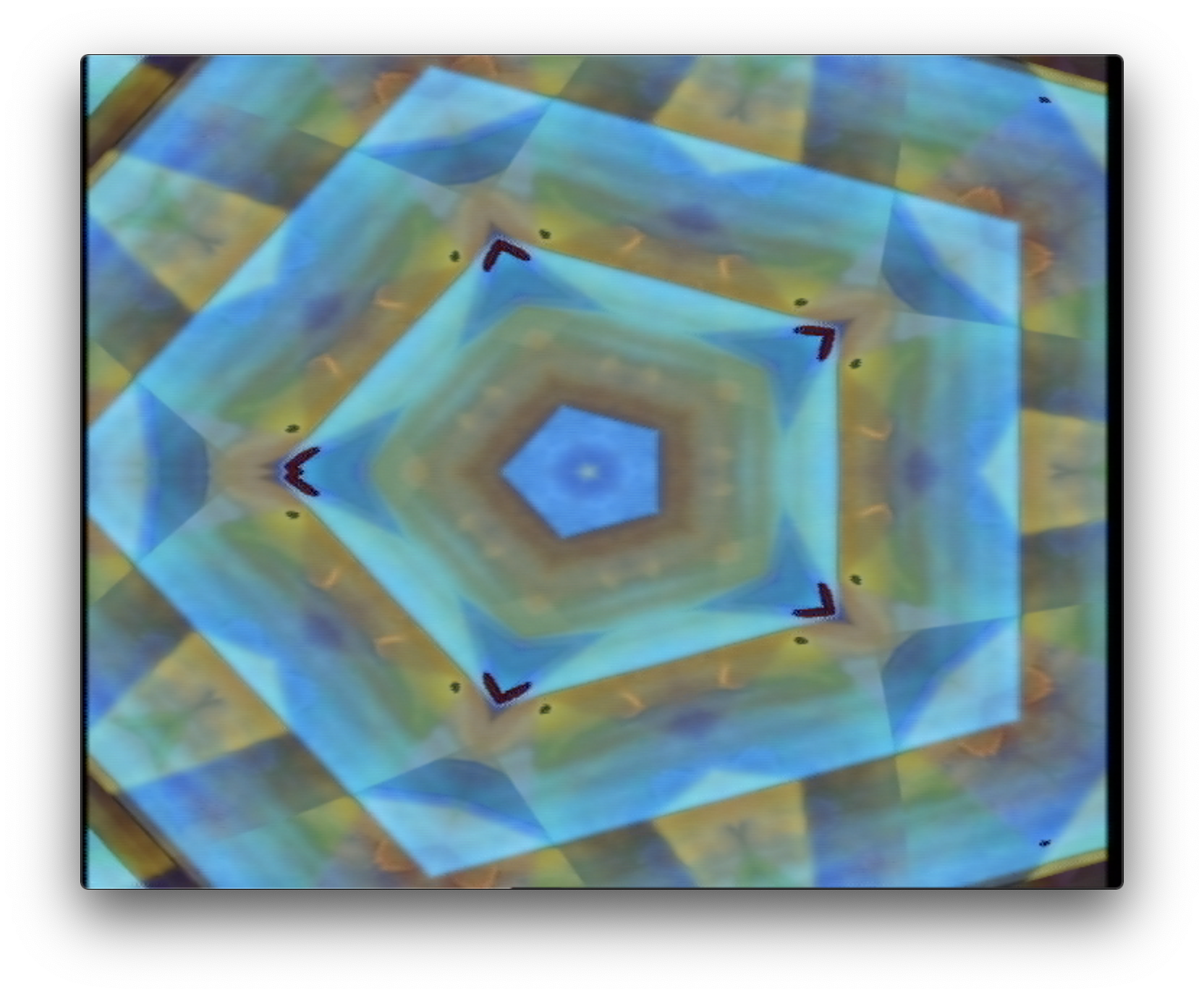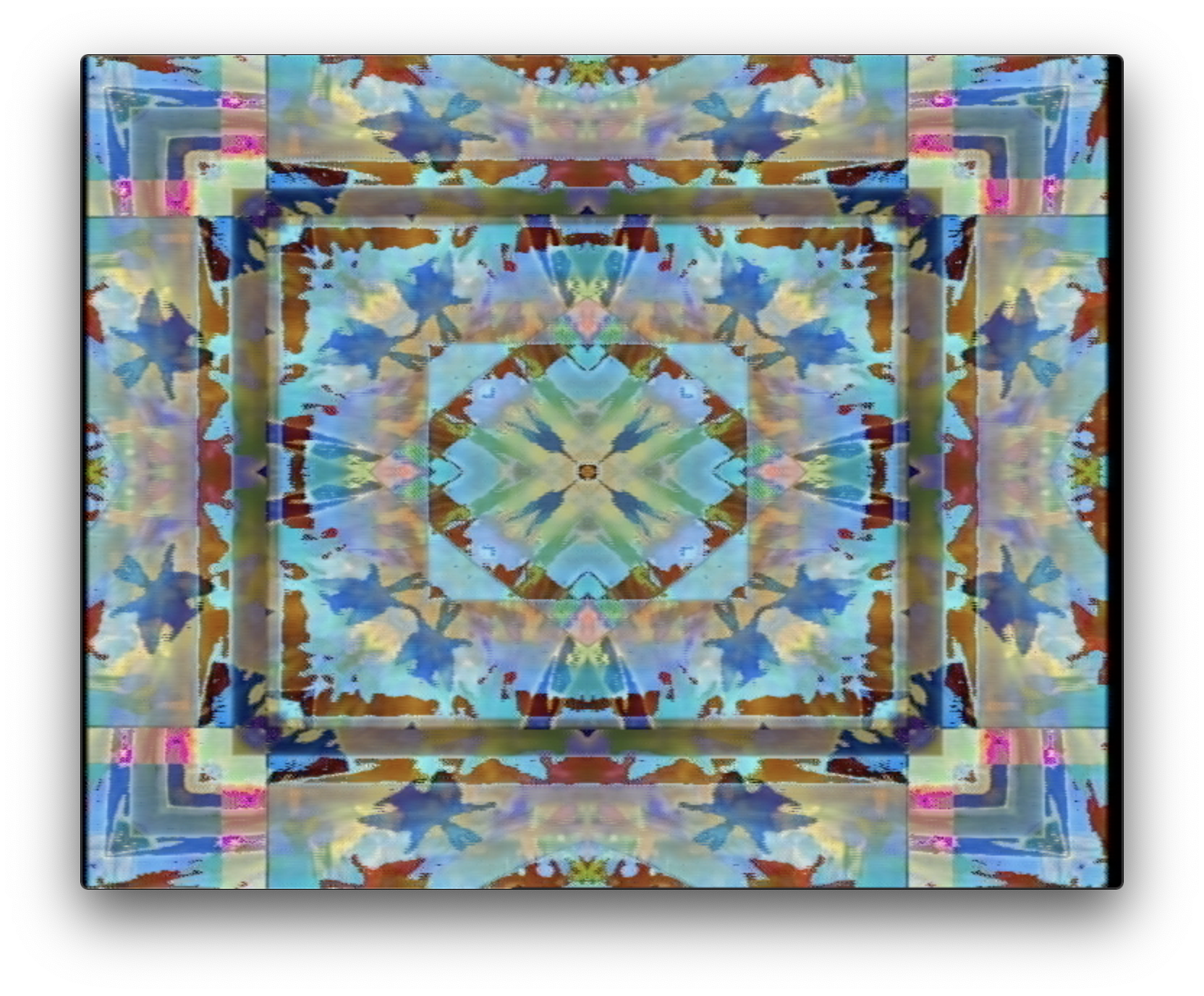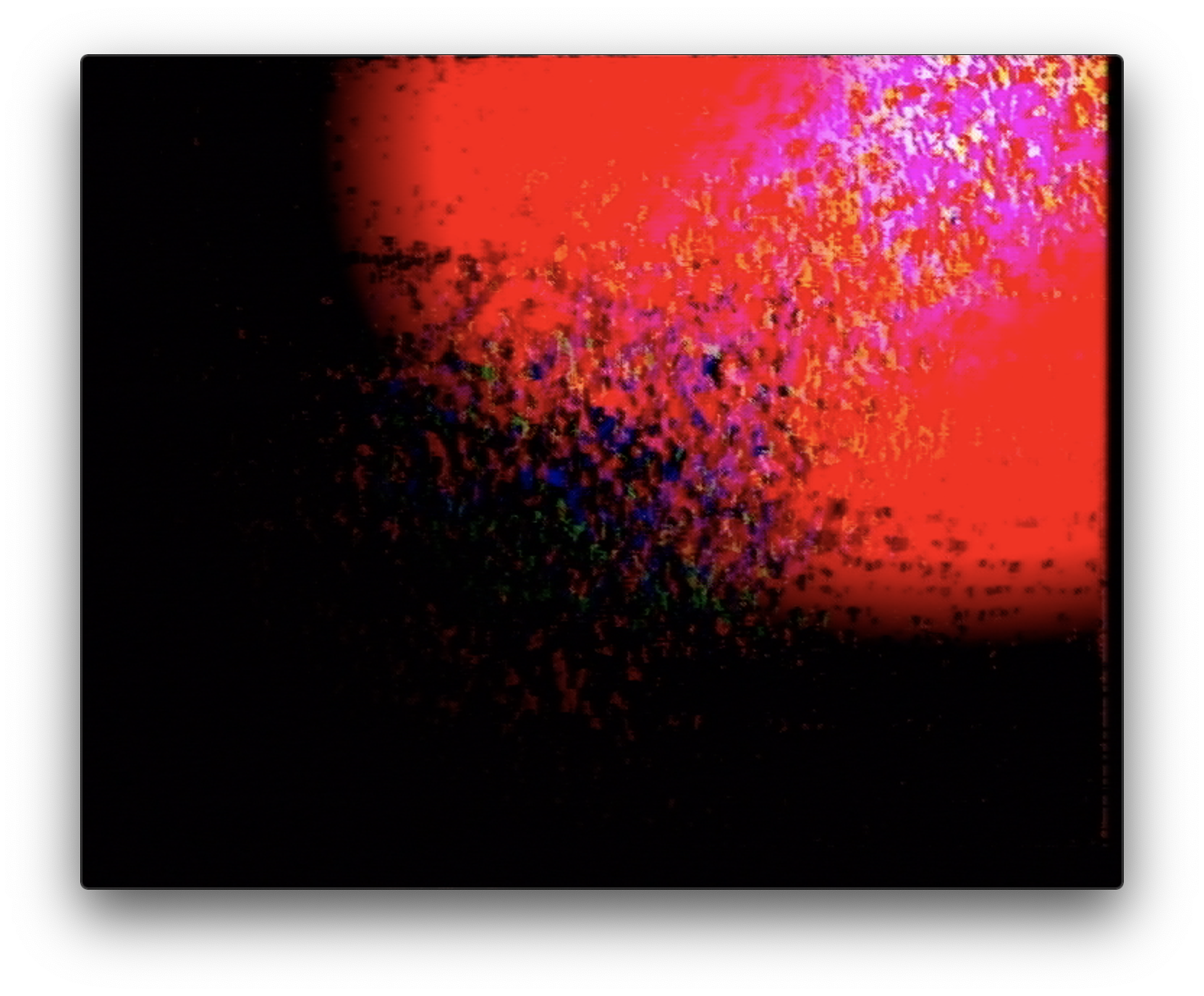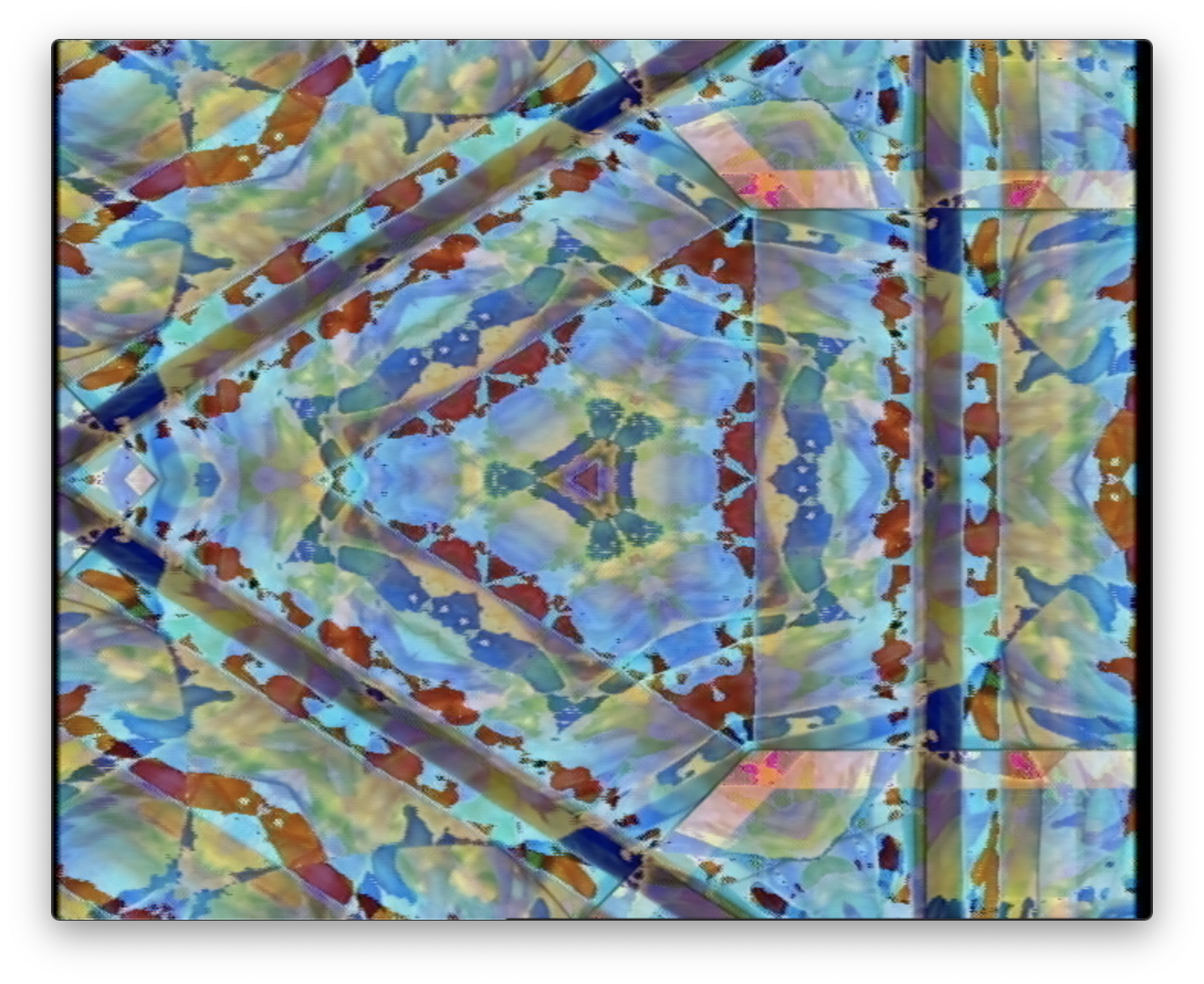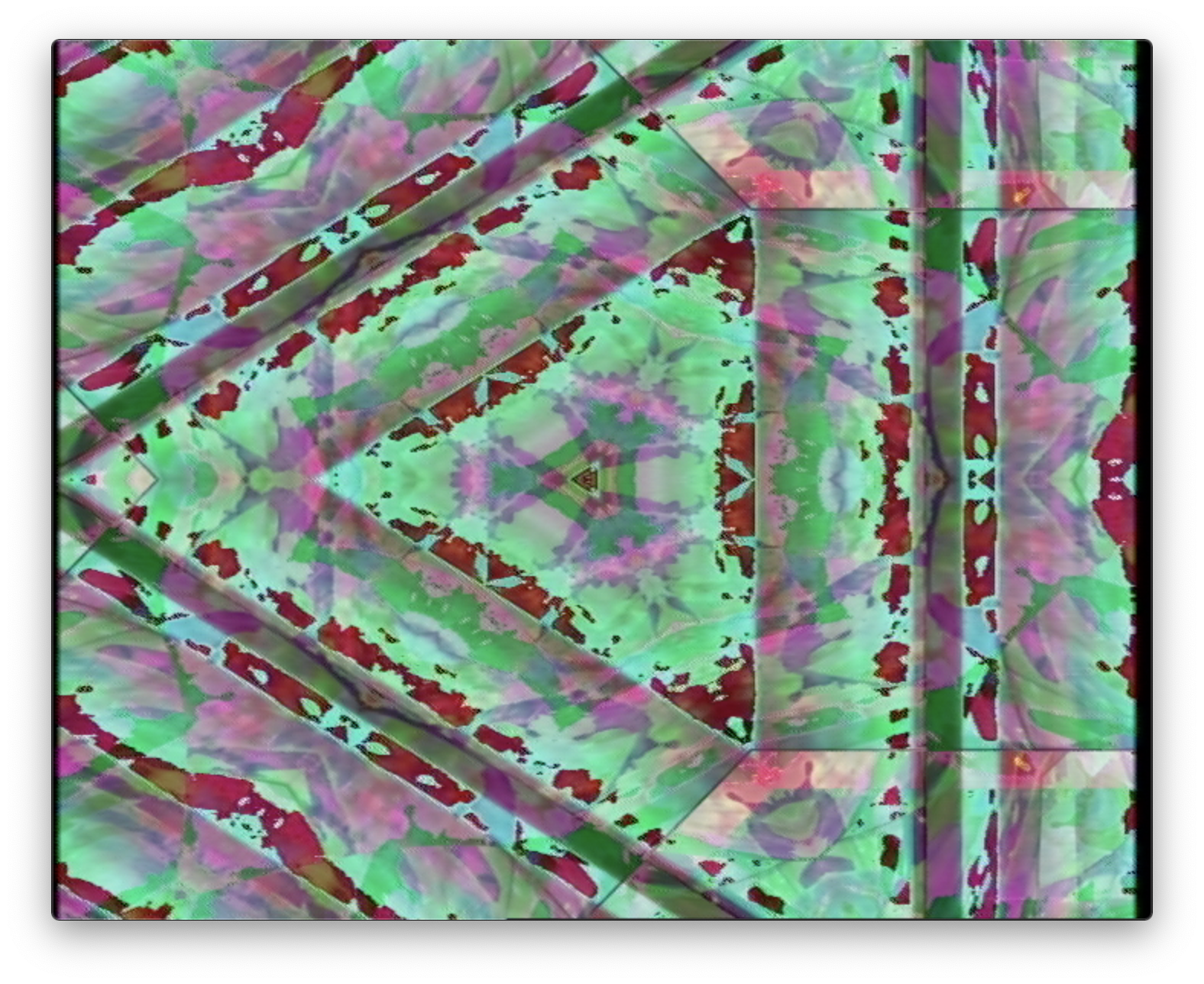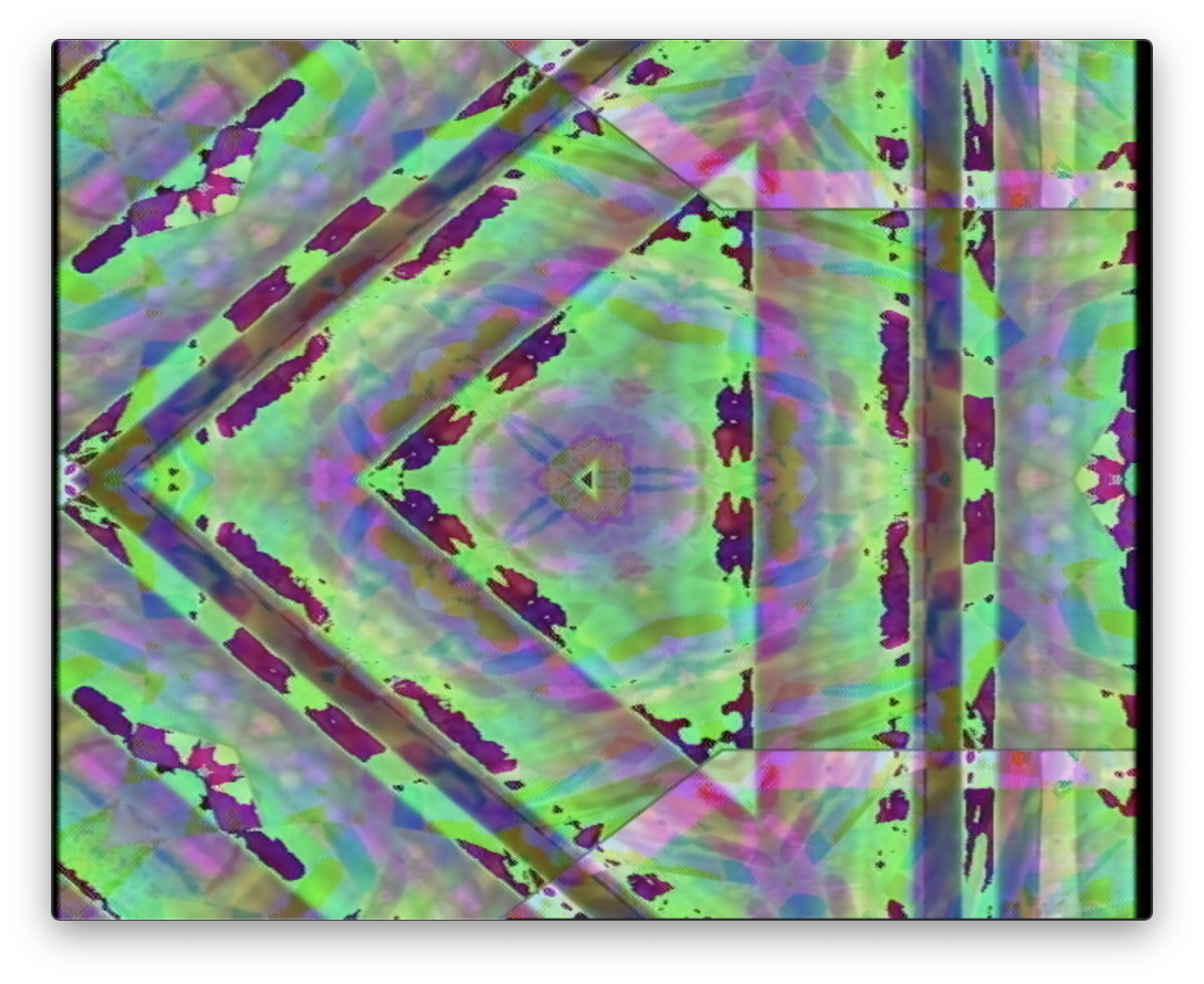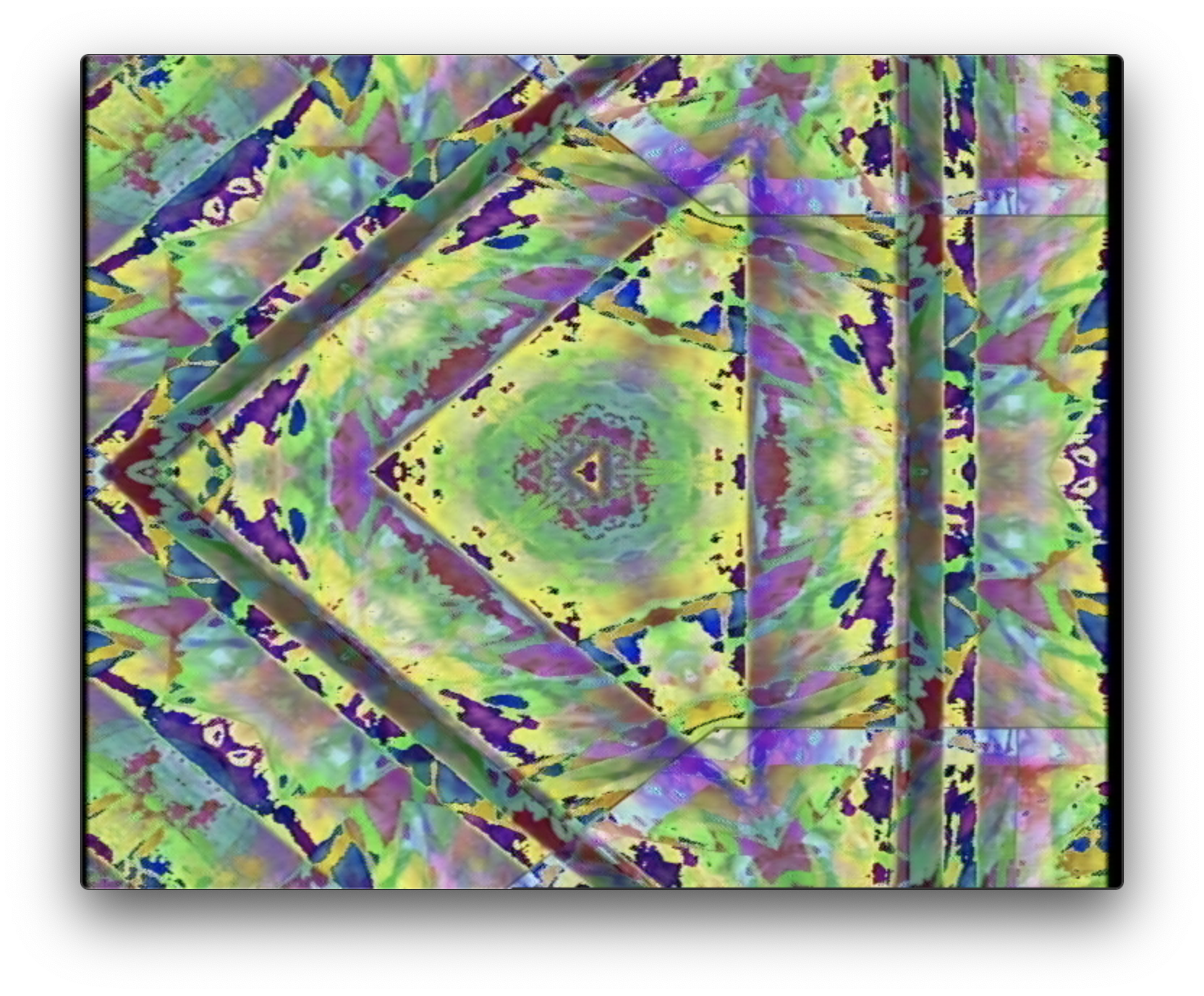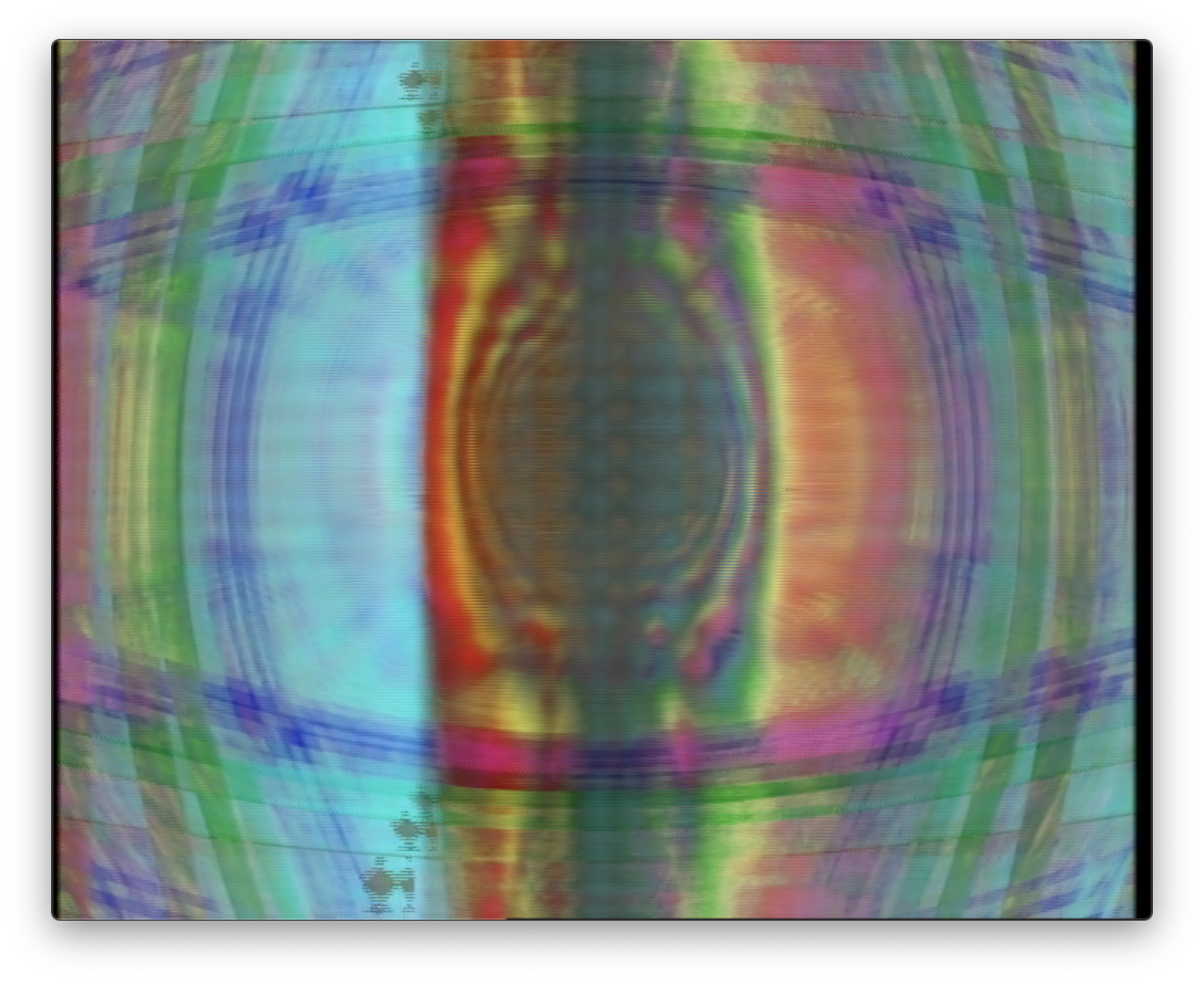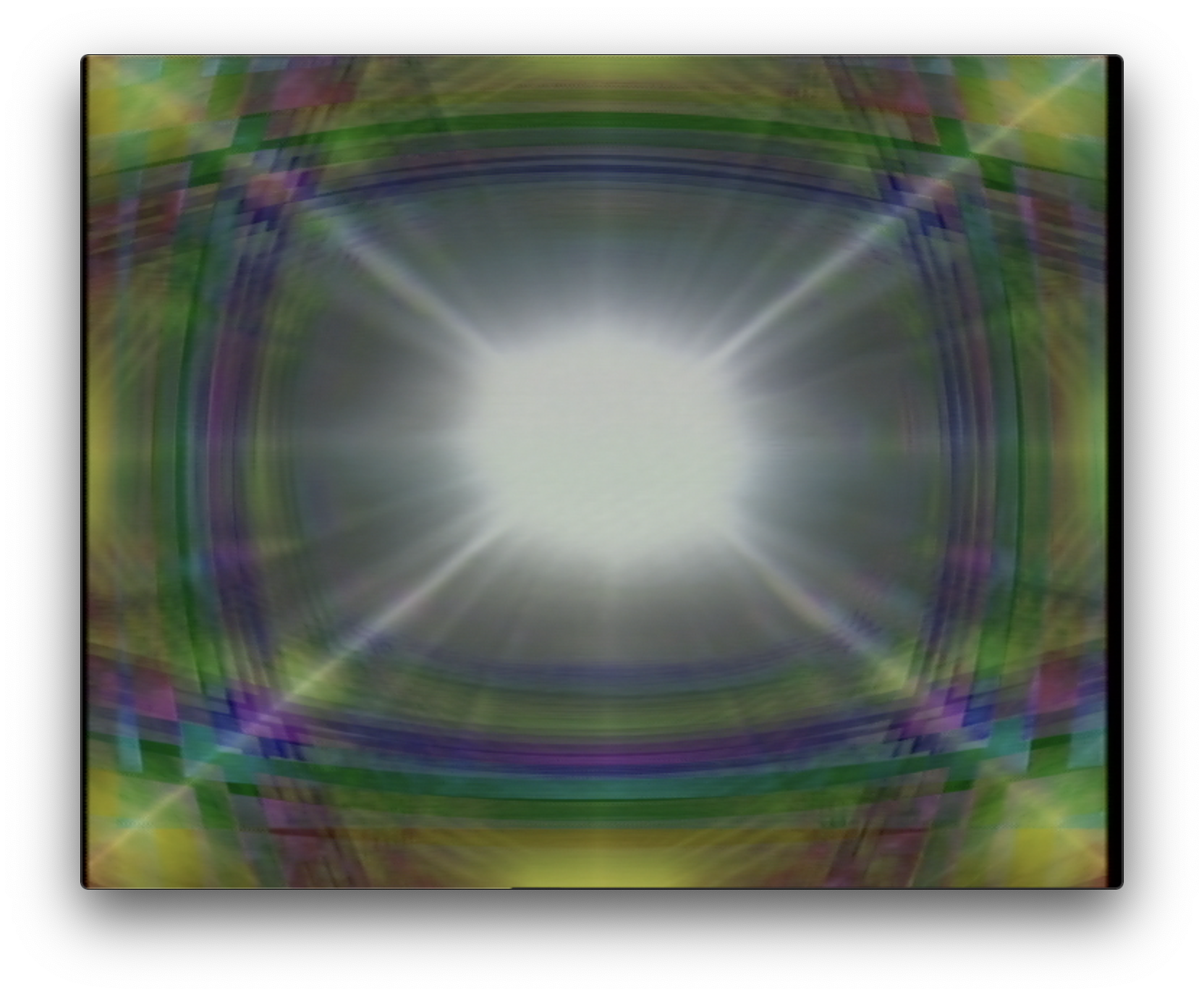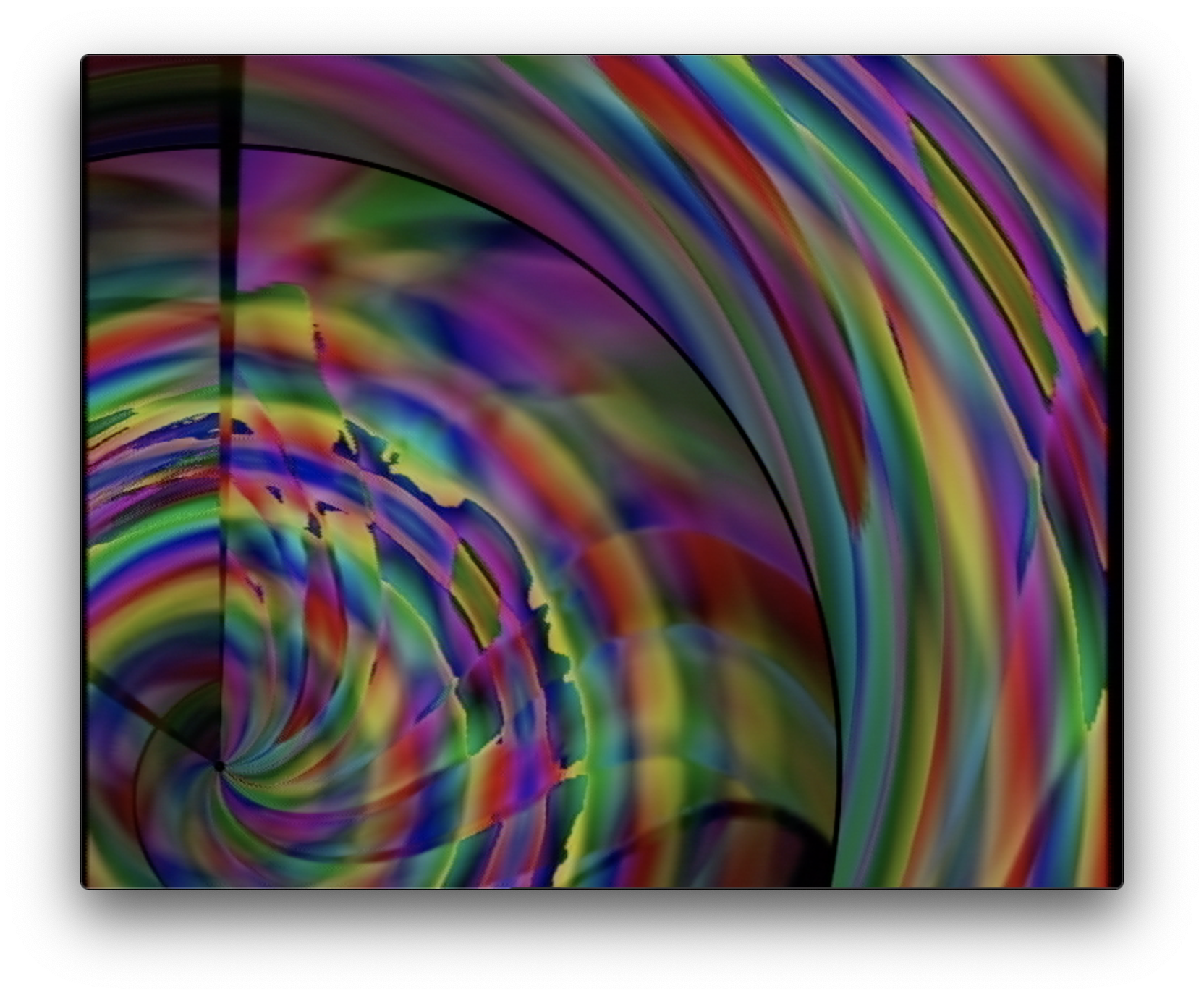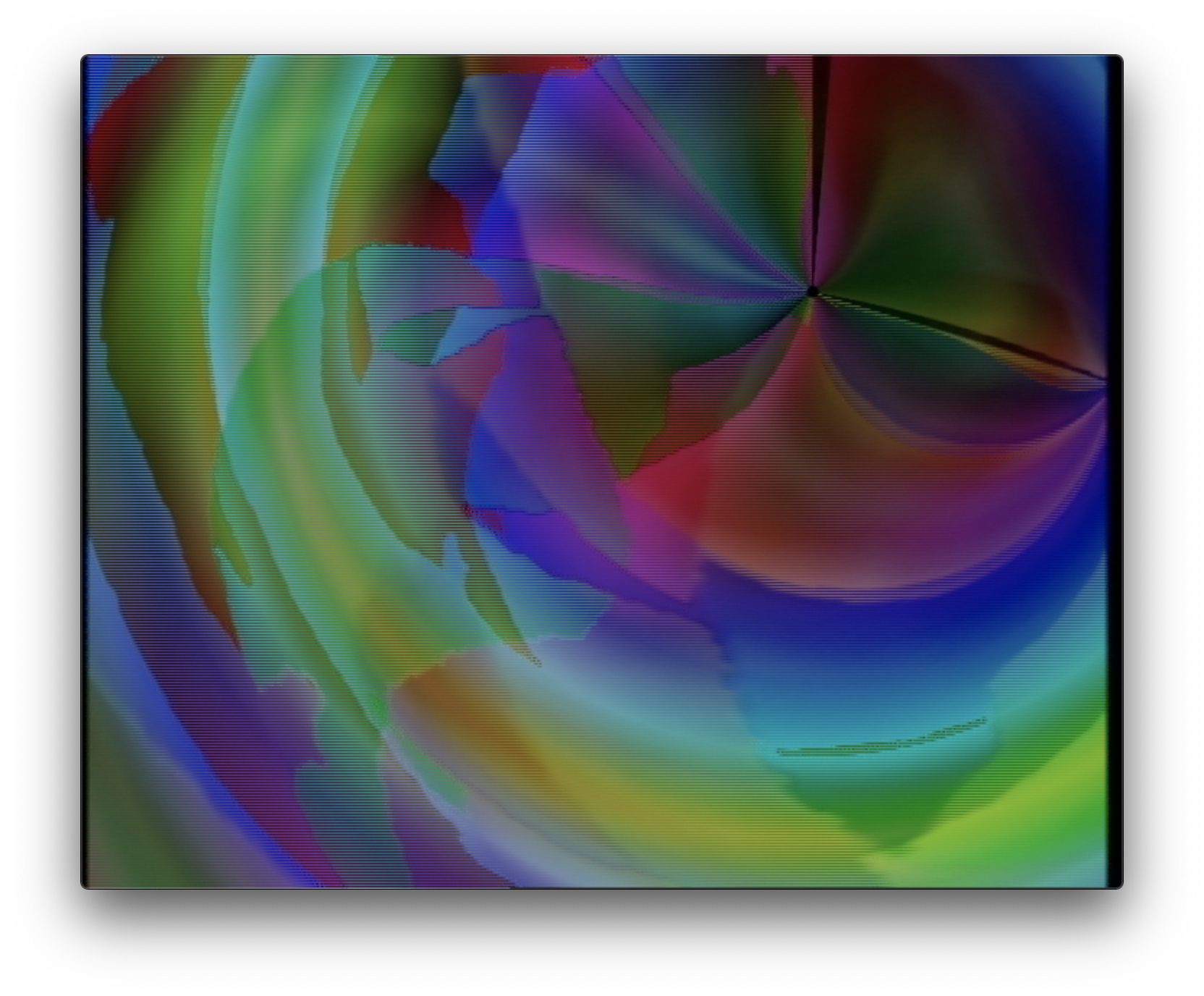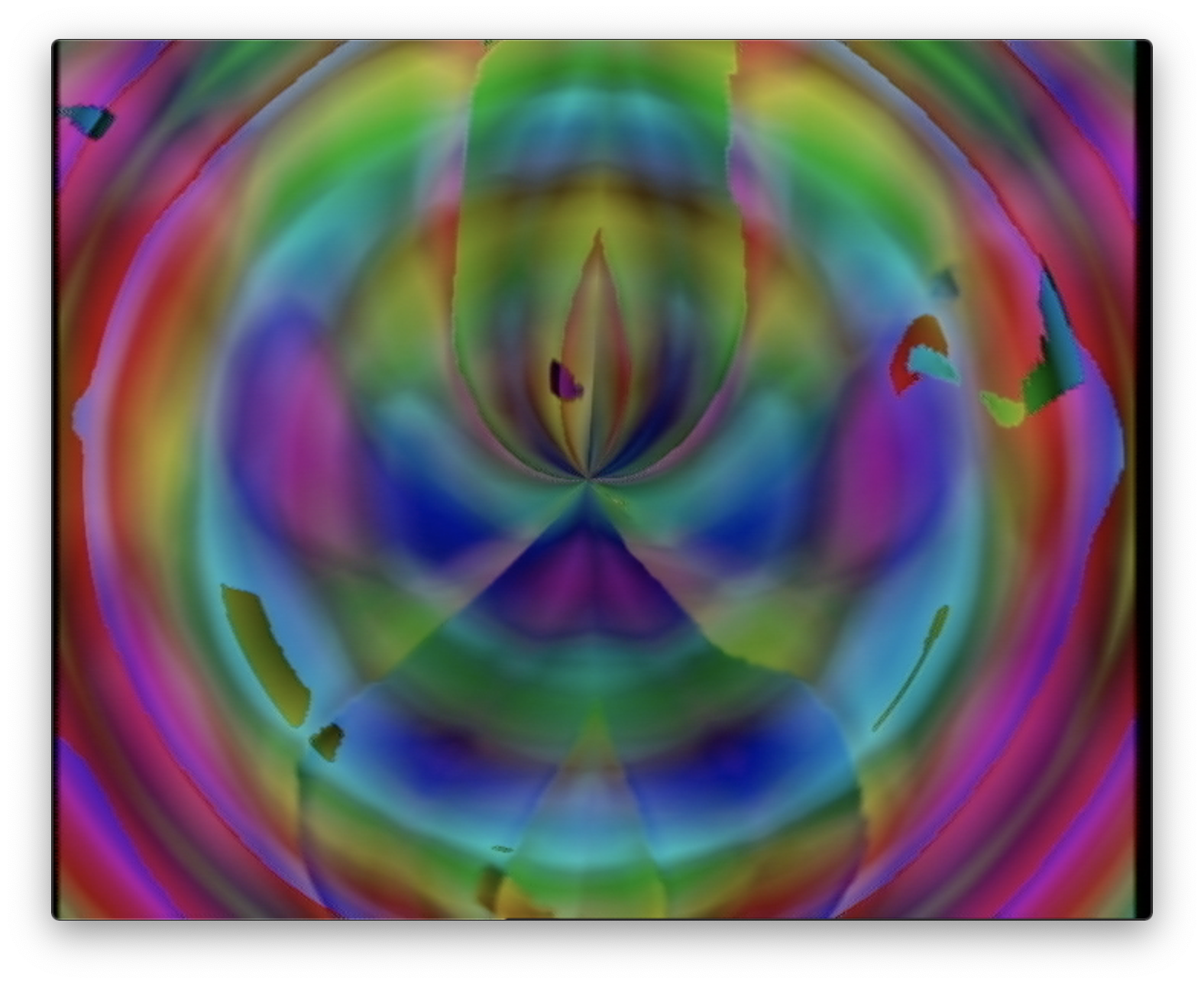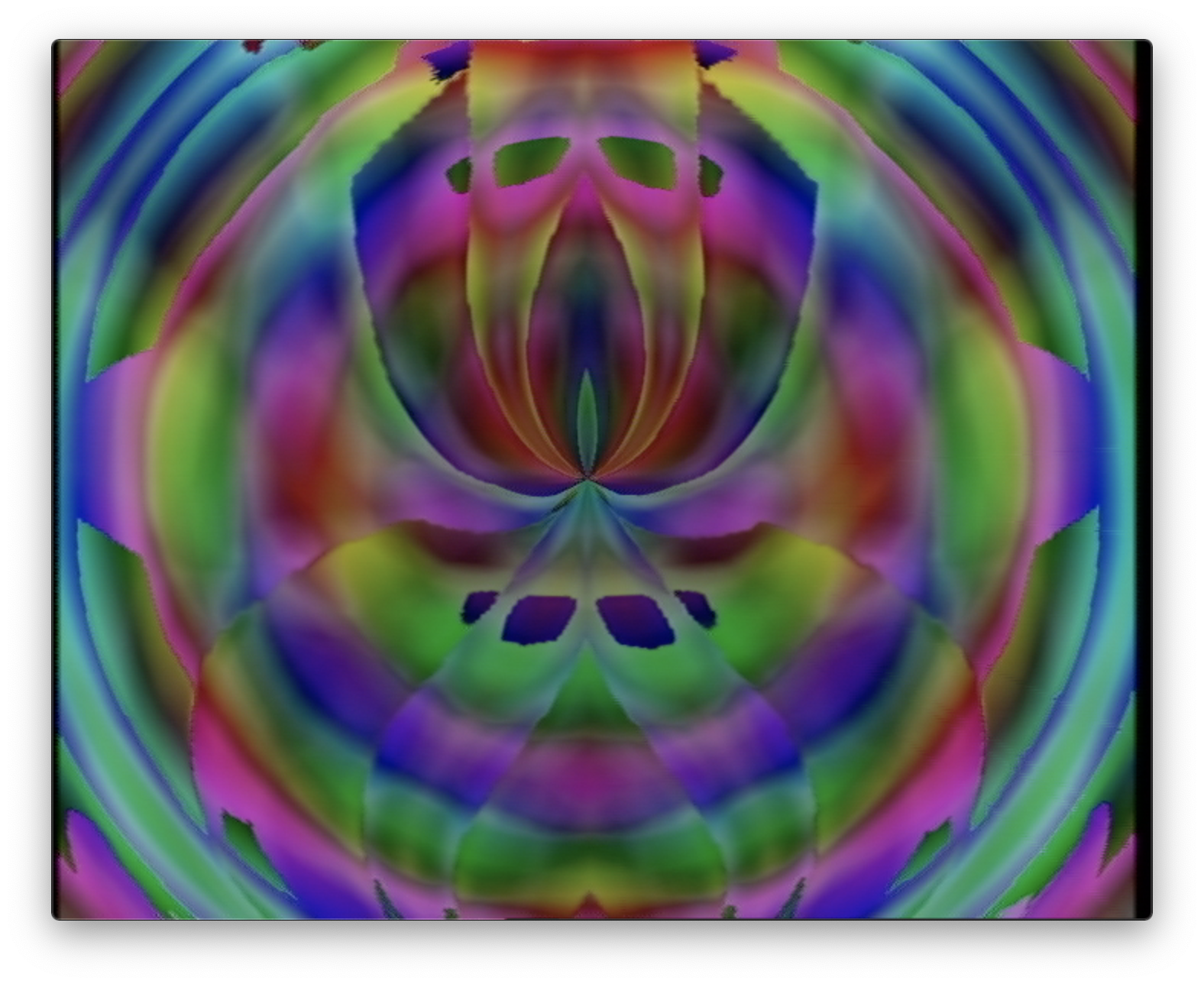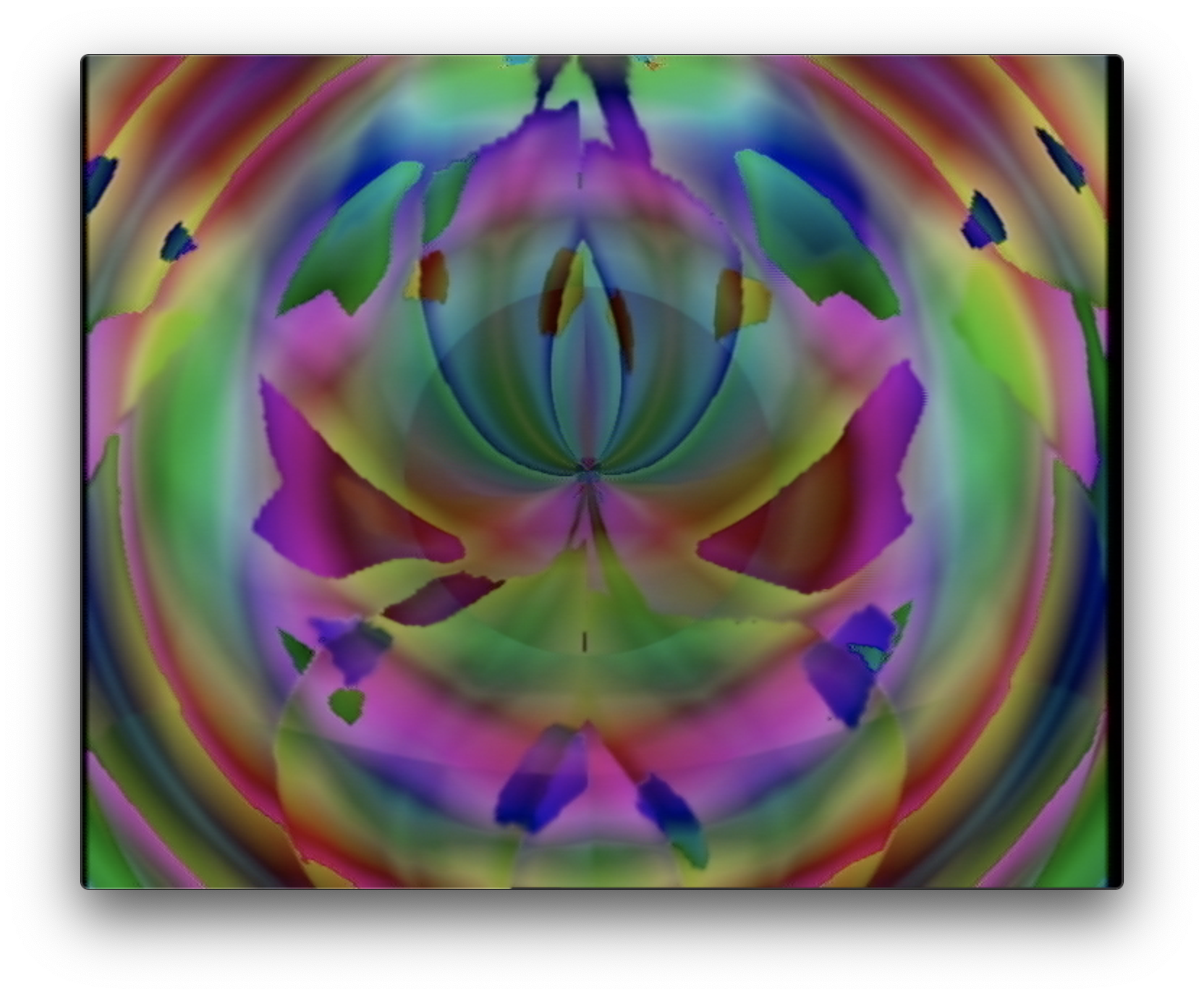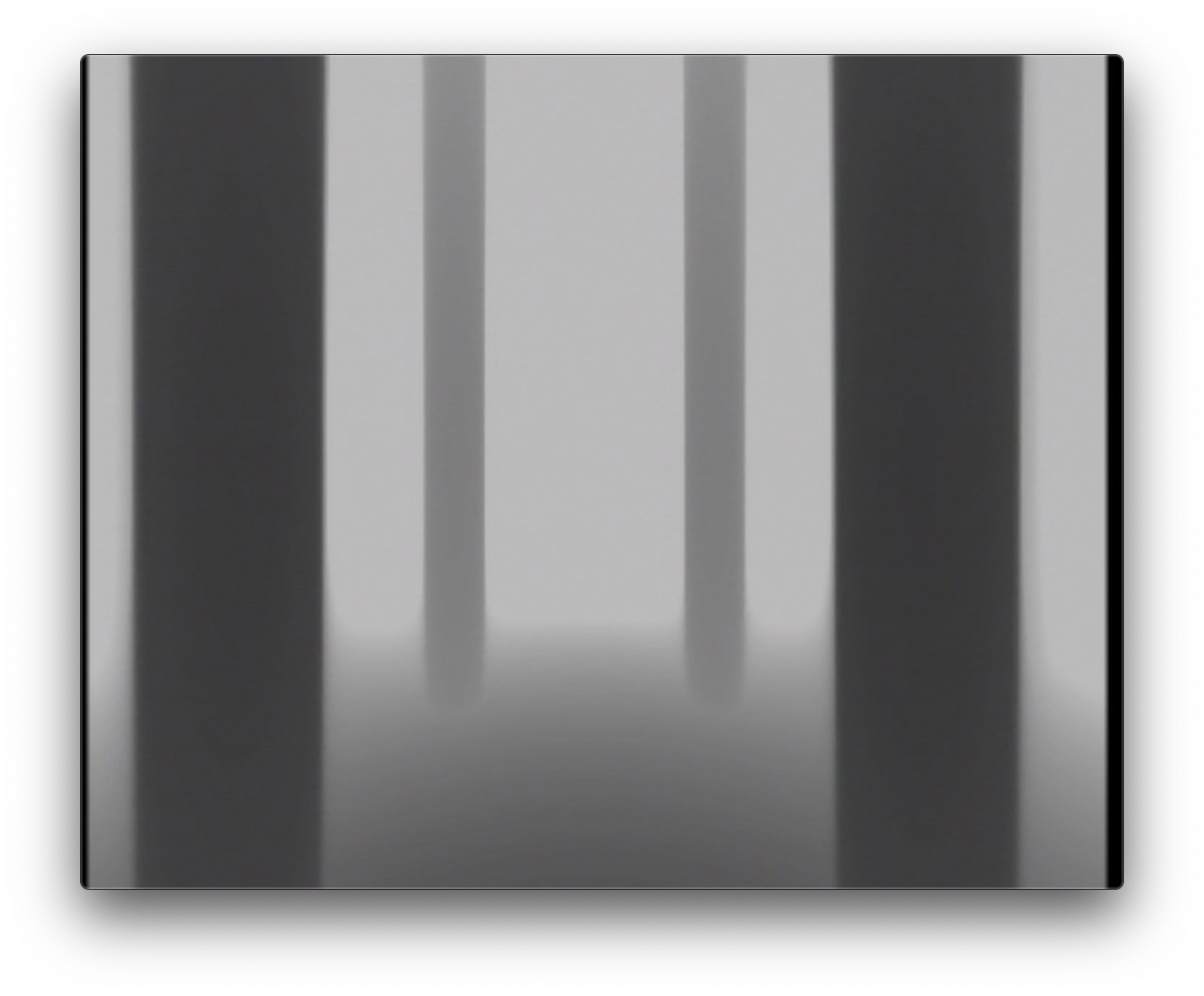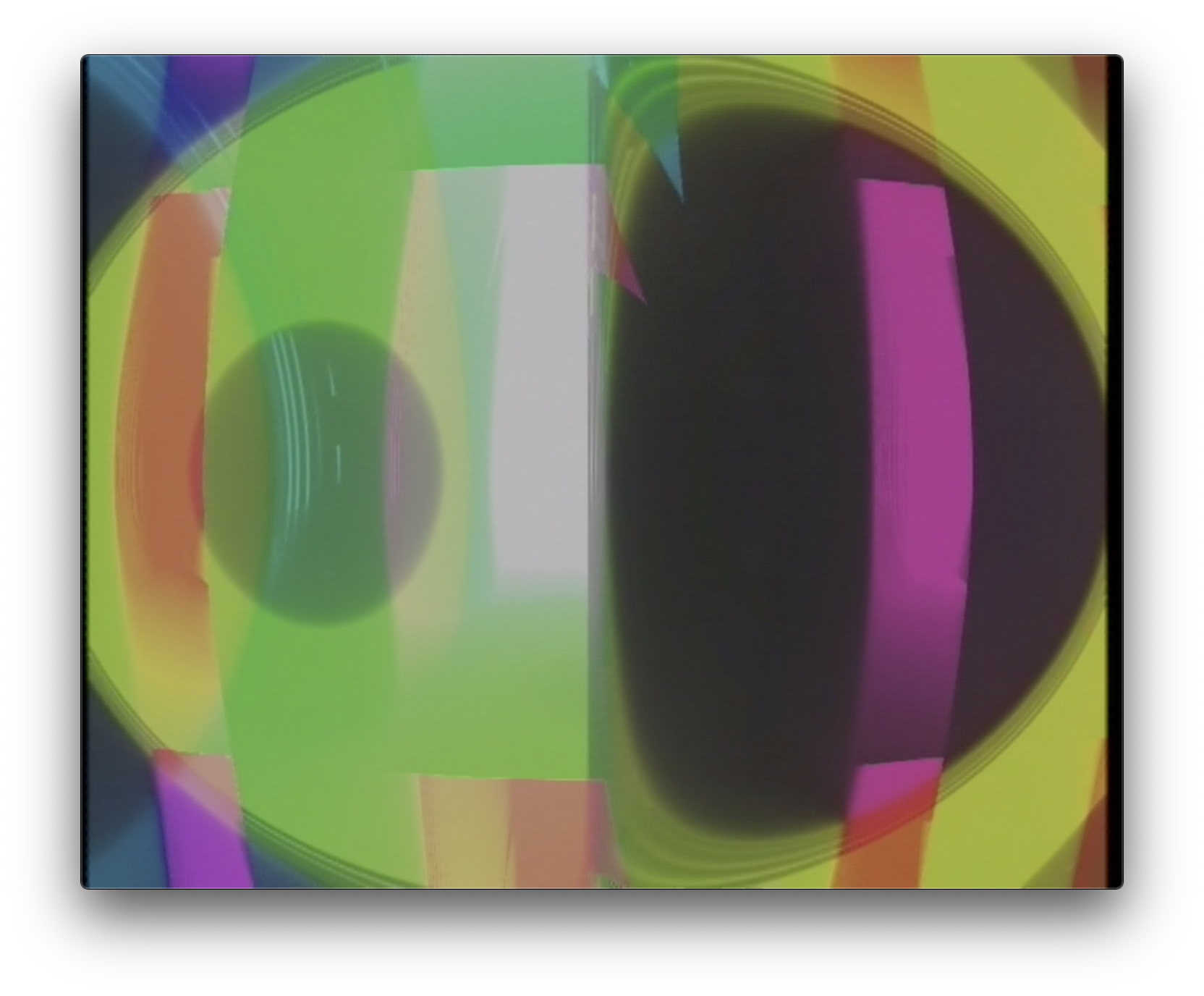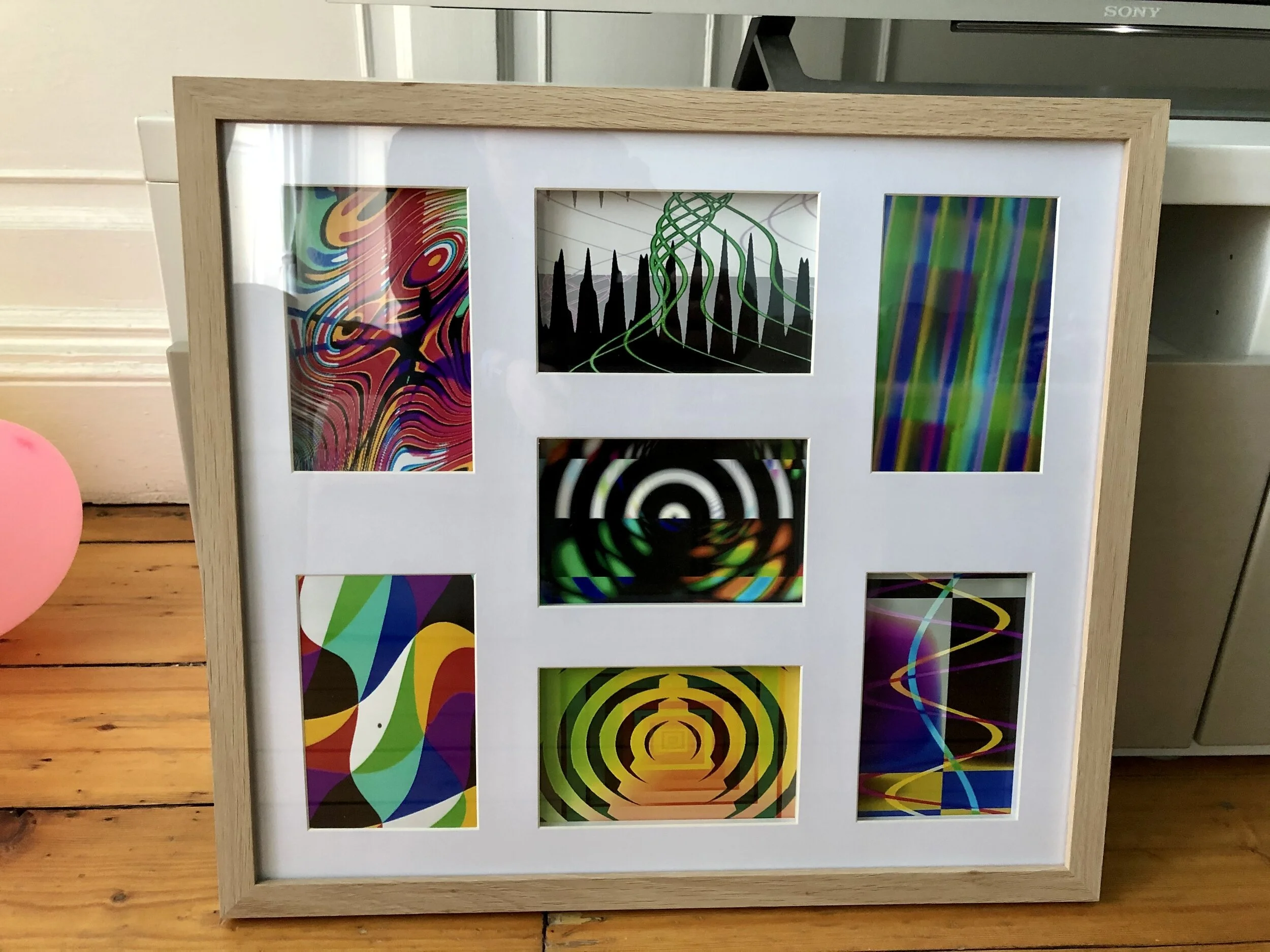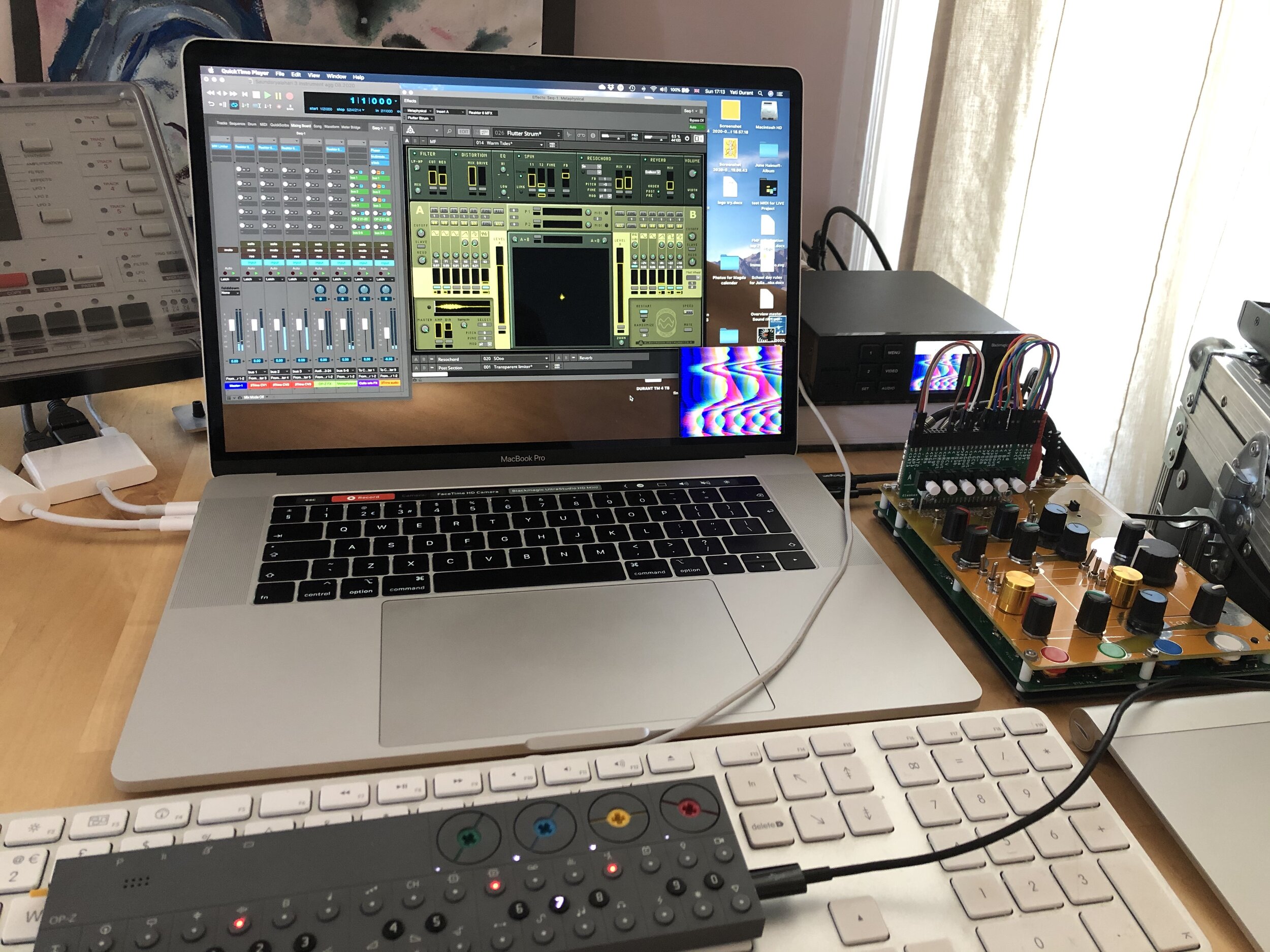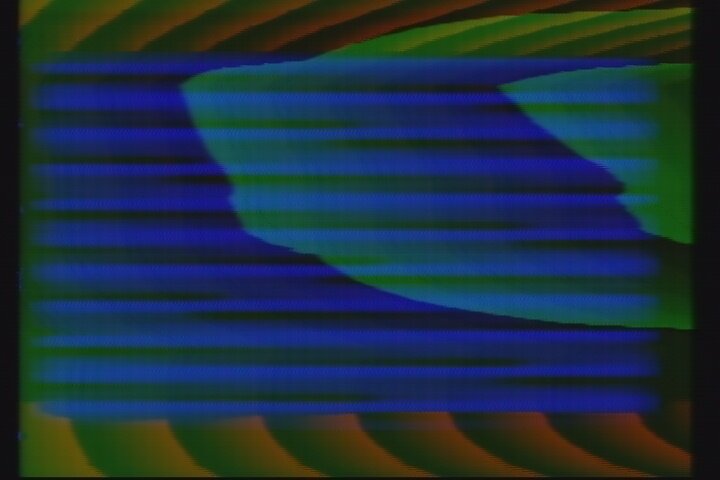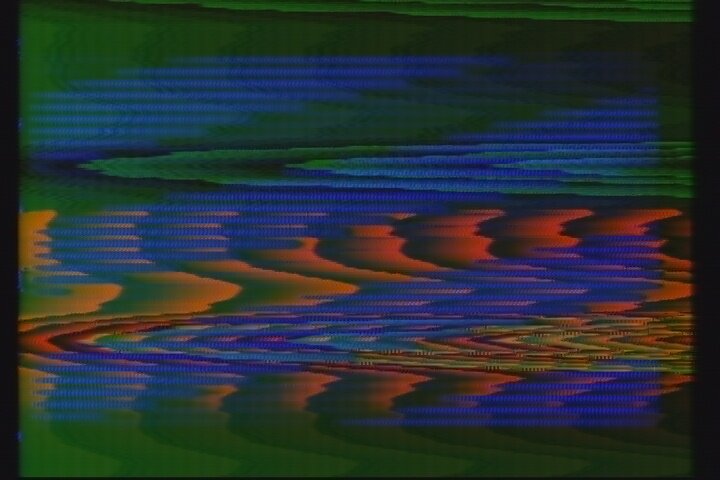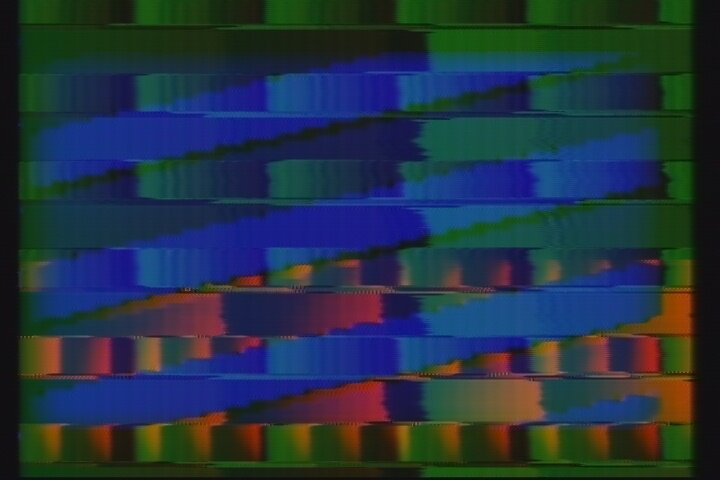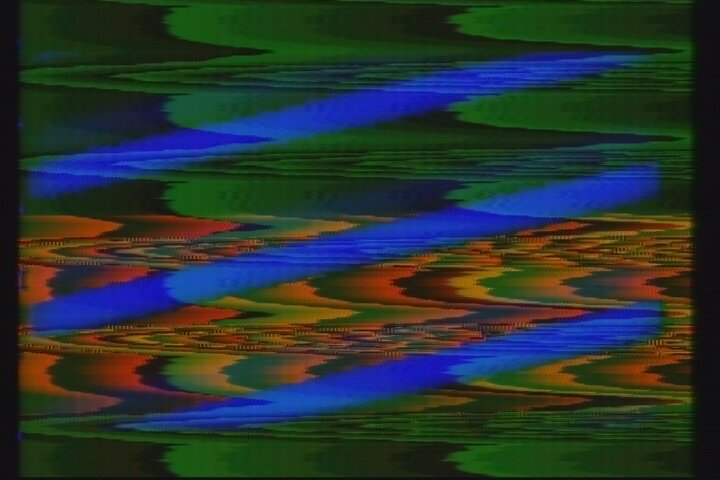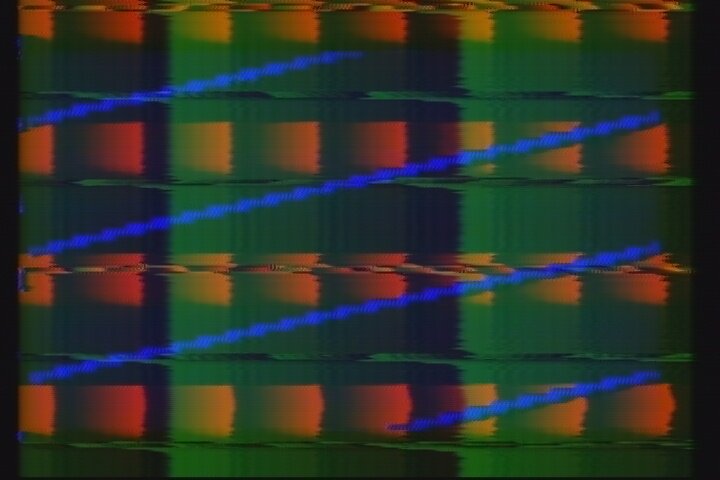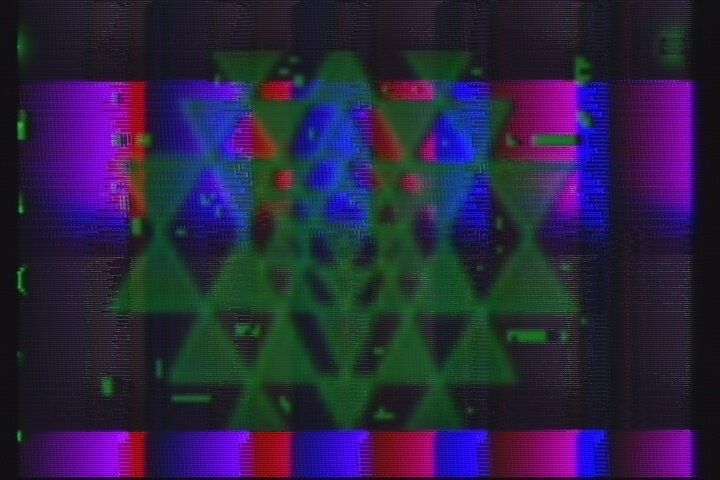Today, Nicola and I experimented with 4 takes of version 2 of Saundaryalahari 3. It was a very productive session with some great dialogue to help understand some of the processes at play.
After the first two chaotic takes, we began a great dialogue on the concept of response in an audio-visual system. Nicola – on the musically interpretational role of solo instrument – felt that the videos were random and unresponsive, and not quite as they were before. (He’s right, and also that the patches as they were set-up were not nearly as responsive as I had hoped, so I was struggling to control them.)
The electronic sounds seemed to be excessive and over complicated. This was, in my opinion, partly due to the overall system – including online recording and routing system – being too complicated to control at once, but also because of another factor in the work. The Saundaryalahari score does not contain very much complicated “searches” for sound and dynamically active bits that, potentially, could acuate the visual systems to respond. This is intentional, because the Saundaryalahari concept – as a compositional concept – is to represent a platform for finding and establishing SELF and thus peace. This means that the interpreters – the musicians and also the electronics artists – are the ones interfacing with the deeper notions of internal dissonance, conflict and “actuation of things”. So, the music remains calm, but it doesn’t have to stay that way!
This led to the beginning of a wonderful dialogue on the question of embellishment and co-composition: Nicola feels more compelled to respond to visually responsive systems and wanted to know – to me as the composer and “director” of the work – if he can make more dynamic changes to the interpretation of the work if he sees it working in the audio-visual (and potentially electronic sounds) systems. Yes, he can and should! So, great outcome.
I think the composition should remain stable, but as a co-performer not as a restrictive device; and that the human interpretation permitting the natural causing of agitation that changes the work each time differently. Indeed, perhaps a 3rd version of Saundaryalahari 3 should be made with even simpler structures, so that this natural SELF/co-composition method can be clarified and emphasized further.
Click on the first image below to play the Take 3 version of the session, in which had the electronic systems integrated. After this, click the next image below to hear the full S3 v.2 in which we chose to eliminate the unnecessary audio effects (except for the reverb) to concentrate on visual interaction.
This was a great rehearsal and I look forward to next week for further new experiments.
The Score to Saundaryalahari 3 version 2 can be found here.






